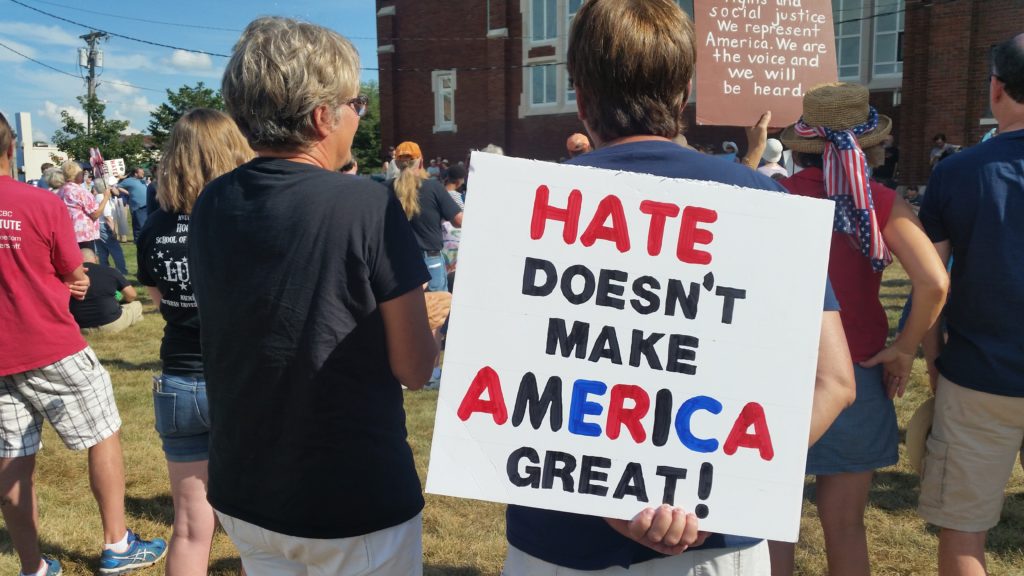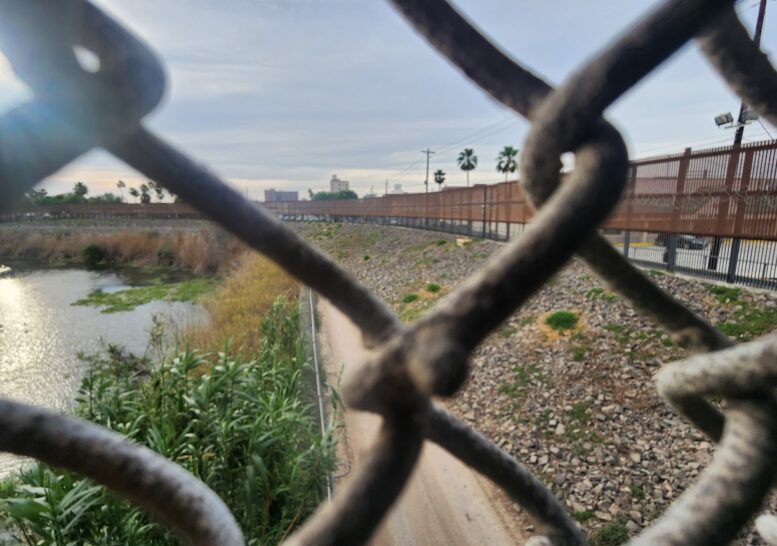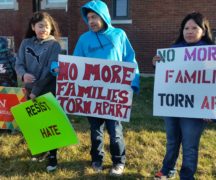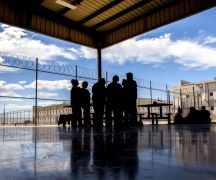By JAN LARSON McLAUGHLIN
BG Independent News
Long proclaimed as a melting pot of blended nationalities, the U.S. has a history of reluctance in welcoming immigrants from many origins.
The acknowledgement that indigenous people are the only non-immigrants in America, doesn’t keep some descendants of immigrants from wanting to roll up the welcome mat now that they are here.
(Editor’s note: This is the fourth day of a series in Bowling Green Independent News on the human cost to failed immigration policies at the U.S. border with Mexico.)
While Lady Liberty offers a beacon of hope, the U.S. has often failed to live up to the words at her feet: “Give me your tired, your poor, your huddled masses yearning to breathe free, the wretched refuse of your teeming shore. Send these, the homeless, tempest-tossed to me, I lift my lamp beside the golden door.”
Even as a new nation, while the U.S. relied on immigration, its leaders wanted to choose which people were welcomed.
The dividing line between “good” and “bad” immigrants has been marked by race, religion, national origin, class, gender, and sexual orientation.

Benjamin Franklin voiced concern that large numbers of “swarthy” foreigners, speaking their own language among themselves, would swamp the colonies. Those dangerous outsiders were Germans, according to Erika Lee, director of the Immigration History Research Center at the University of Minnesota.
“Xenophobia doesn’t just reveal itself through a bigoted relative who is saying stuff about ‘the Mexicans’ at Thanksgiving dinner,” Lee said. “Xenophobia is a form of racism that has been embedded in our laws.”
It was also openly expressed in newspapers.
Political cartoons from the 19th century made Irish immigrants appear very similar to apes. Later, in the early 1900s, editorial cartoons showed Uncle Sam holding back black and brown vermin from the U.S. shores.
Building walls not gates
During a recent trip to the Texas-Mexico border, members of Bowling Green First Presbyterian Church and Flower Mound Trinity Presbyterian Church in Texas learned from Pastor Ismael Flores, of the Practice Mercy Foundation, about America’s history of mixed messages to prospective immigrants.
Starting in 1875, a series of U.S. restrictions on immigration were enacted. They included bans on criminals, people with contagious diseases, polygamists, anarchists, beggars and importers of prostitutes.
The 1882 Chinese Exclusion Act was the first attempt to single out an ethnic group for restrictions. Chinese were welcomed for working in mines and laying train tracks, but banned from citizenship.
The 1917 Act implemented a literacy test that required immigrants over 16 years old to demonstrate basic reading comprehension in any language. It allowed immigration officials to exercise more discretion in making decisions on who got in.
But some felt this law still wasn’t keeping out enough of the “undesirable” immigrants.
So extreme restrictions of immigration came in 1924 when quotas were enacted as part of the Johnson-Reed Act. The quotas were necessary, supporters said, because immigrants from southern and Eastern European countries had failed to satisfactorily assimilate to life in the U.S.
The quotas were set at “two percent of the total number of people of each nationality in the United States as of the 1890 national census.” Those quotas favored immigrants from northern and Western Europe and were intended to preserve the homogeneity of the U.S.
In 1965, the Immigration and Nationality Act was passed, creating a new system that favored family reunification and skilled immigrants, rather than country quotas.
In 2017, a “Muslim Ban” prohibiting travel and refugee resettlement from select Muslim countries was ordered by then President Donald Trump. And in 2019, Trump’s Department of Homeland Security finalized a rule requiring that before immigrants were allowed in it must be determined if they would likely need benefits from the government.

Easy scapegoats
Throughout U.S. history, immigrants have been scapegoats for problems ranging from lack of jobs, housing shortages, spread of disease, and overdose deaths.
“When things are going well, we welcome the immigrants. When things are going bad, we vilify the immigrants,” Pastor Flores said.
And while the Central Americans aren’t welcome here, they are sought after to work in U.S.-owned plants located in Mexico.
U.S. companies have the most foreign-owned businesses in Mexico, where there is a surplus of cheap labor with the average pay of $3 an hour. Major auto and electronic industries have found Mexico to have plenty of employees, with few workers’ rights, and limited safety restrictions.
The demands of migration to the north are likely to grow as climate change leads more people trying to escape oppressive heat, lower water levels, failing crops, and loss of jobs, according to Dr. Marc Simon, associate professor in the Department of Political Science as well as coordinator in Peace and Conflict Studies at Bowling Green State University.
“It’s going to get worse with climate change. It’s going to be bad in Mexico and subtropical areas,” Simon said.

U.S. role in turmoil
It’s hard to ignore the U.S. role in manipulating Central American nations to benefit U.S. business interests and political aspirations.
Meddling by U.S. policies in some Central American nations is blamed by some for creating much mass migration now.
U.S. policy toward Latin America has fueled historic numbers of asylum seekers, according to a study by the Great Cities Institute at the University of Illinois, Chicago. The research looked at the long history of U.S. intervention and wealth extraction in the region, which has led to more than six decades of massive human migration from that region to the U.S.
In the early 20th century, the U.S. launched several interventions and invasions in the region in order to promote American business interests.
This report cited evidence that U.S. economic warfare against three specific countries – Venezuela, Cuba and Nicaragua – is a significant cause of the latest migration surge.
Over the years, the U.S. supported dictatorships to hold off the threat of spreading Communism. U.S. efforts toward regime change in Latin America often involved U.S.-supported coups to replace left-wing leaders with right-wing or authoritarian regimes.
And when that didn’t work, heavy sanctions were imposed on the already fragile economies of Central America.
Instability has led to poverty, violence and the rise of drug gangs in some countries.
“Central America didn’t develop economically,” Simon said.
Venezuela, which had the largest oil reserves in the world in the 1980s and 1990s, crumbled when the U.S. issued economic sanctions and stopped buying oil from the country.
“Their economy collapsed,” with the nation’s GDP dropping 75%, Simon said. That has led to a mass exodus from Venezuela, where 62% of adults had college degrees, he said.
“These economies are dying,” Simon said. “If the economy is good, people have a life and can get jobs. They stay.”
But when they can’t find jobs or don’t feel safe in their homeland, many migrate elsewhere.
“Understand when you put massive pressure on a country, people are going to leave,” Simon said.





